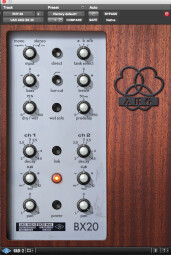Regardless of whether your reverb is algorithmic or convolution, chances are the plug-in you use provides different types of reverb. And, in my view, the choice of reverb type is crucial to get the expected results. Unfortunately, most beginners usually make random choices, which only complicates things. That's why, starting today, I intend to review the main reverb families and their potential uses.
As usual, these examples are by no means mandatory rules. However, I strongly recommend you to observe them, at least in the beginning, until you are more familiar with how they all work. As times go by, your experience will obviously push you to experiment with the different reverb types at hand, but your decision will be better informed and you won’t just go picking one randomly from an endless list of options.
Spring break
Let’s start with spring reverbs. In the beginning, this type of reverb used an electromagnetic device made of springs (between one and three) to try to simulate a “natural” reverberation. The principle was simple: Sound was sent to one end of the spring(s) with a transducer, making the spring(s) vibrate. The result at the other end of the spring(s) would then be recorded by means of another transducer.
While the sound of these devices is far from being realistic, the presence of spring reverbs on many guitar amps since the 1960s and up to this day has somehow resulted in it being embedded in the collective unconscious. Thus, it comes as no surprise that you can still hear its characteristic sound on modern productions. They obviously shouldn’t be used to try to recreate a realistic space. But they can, however, be used to provide an instrument a more or less pronounced vintage touch.
As you have probably guessed by now, spring reverbs work wonders on electric guitars, but not only! They might also be useful on organ-like sounds. In fact, if I’m not mistaken, the first instrument to feature a spring reverb was a Hammond organ. Springs work great on vocals and wooden instruments, too. But, on the other hand, I wouldn’t recommend you to use a spring reverb on percussion instruments. Why? Well, put simply, it sounds awful. Try it for yourself if you don’t trust me ─ you have been warned.
To finish, a couple of remarks regarding the settings of these type of reverbs. It’s important to know that, the more springs it features, the denser the reverb will be. And that the tension and length of the springs have a big influence on the spectral result. For a more brilliant ─ and, at the same time, cheap ─ sound, go for shorter and tighter springs. Conversely, long and loose springs produce a more somber and less low-cost sound, if you know what I mean.
Join me next time to discuss Plate and Hall reverbs.



